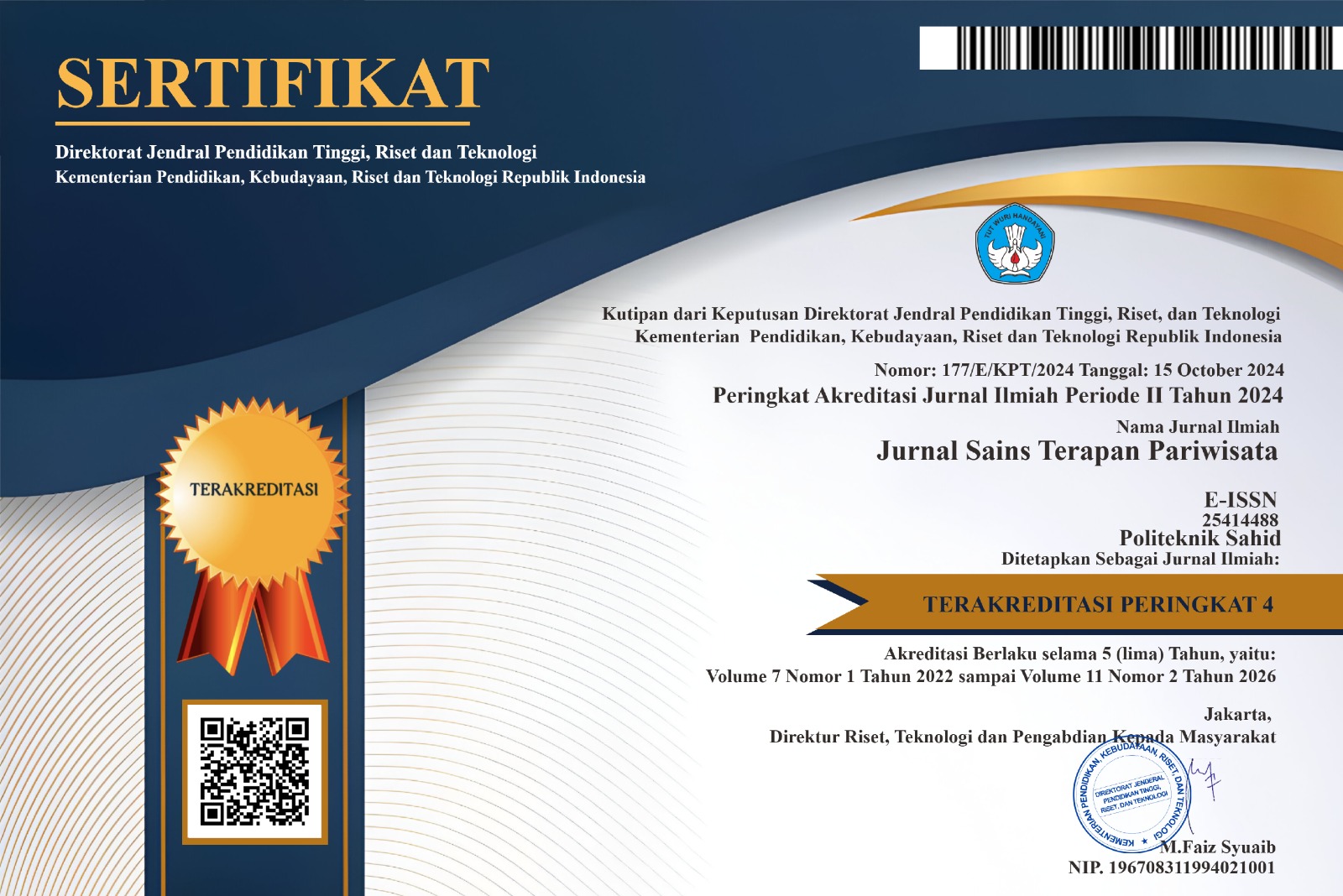Es Krim Biji Jali Sebagai Ikon Kuliner Jawa Barat
Keywords:
Gastronomy, culinary, jali-jali, ikonAbstract
One of the potential cereals to be developed is jali (Coix larcyma jobi L.) which is classified as a tropical cereals (Cereae). In Indonesia, jali plants spread in various ecosystems, both dry and wet climates, such as those found in West Java, Sulawesi, Sumatra, Kalimantan. West Java is the largest jali-producing region, this plant is widely cultivated conventionally by the community as a distinctive crop planted in the yard intercropping. Today's modern society hardly knows about jali. Though jali is a type of cereal plant that is easily planted, easily adaptable and resistant to disease, easy to process, and can increase food security. Jali also has a high nutritional content, especially protein content that is higher than other cereals and is equivalent to wheat, which is 14%. The use of jali as food is still limited. It is necessary to increase the use of jali into processed food because jali production is quite high, it is expected that processed jali food products that are attractive to the public, including the largest food consumers, are young people. Jali milk products can be developed as a substitute for cows’s milk in dairy products. One of the processed milk products that are is ice cream. The potential of the Indonesian ice cream market is still wide open. Making ice cream through a combination of freezing and agitation in ingredients consisting of milk and milk products, sweeteners, stabilizers, emulsifiers, and flavor enhancers. The research method uses quantitative methods with experiments and explanatory surveys. Where the experimental method was carried out organoleptic tests on 30 semi-trained panelists then continued with the survey method on 100 respondents regarding product packaging and public perception of the jali seed ice cream as a culinary icon for souvenirs in West Java. Analysis of the experimental method was carried out using the Anova Test and the Duncan Test. Whereas the quantitative explanatory survey method uses descriptive statistic analysis. The results of the study showed that the level of
preference of ice cream samples with percentage of jali seeds (with a dilution of 4: 3 use water) 80% &, 90%, and 100% had differences in taste, aroma, and general acceptance, but did not differ in color and texture. Whereas the hedonic quality test or quality in terms of taste has differences between the three samples. Jali seed ice cream the panelists most ice cream with 80% presentation of jali seeds (with dilution). The criteria for the sample are rather not white, the texture is rather soft, the aroma is not strong, and the taste is sweet. From the market survey, 85% of the results were found that of the jali seed ice cream while the rest answered quite like the jali seed ice cream. For questions about the appropriate type of packaging, most respondents liked the paper cupbased packaging model with the image or logo of the jali seeds and cartoon character of West Java akang. Questions about prices, respondents answered a price range of Rp.3,000-5,000 per cup. The results of the interviews showed that most respondents did not yet know jali seeds. After trying the jali seed ice cream product, all respondents responded positively and said they liked and even really liked the taste of the jali seed ice cream.
Downloads
Published
How to Cite
Issue
Section
License
Copyright (c) 2022 Dewi Ayu Kusumaningrum

This work is licensed under a Creative Commons Attribution 4.0 International License.
























